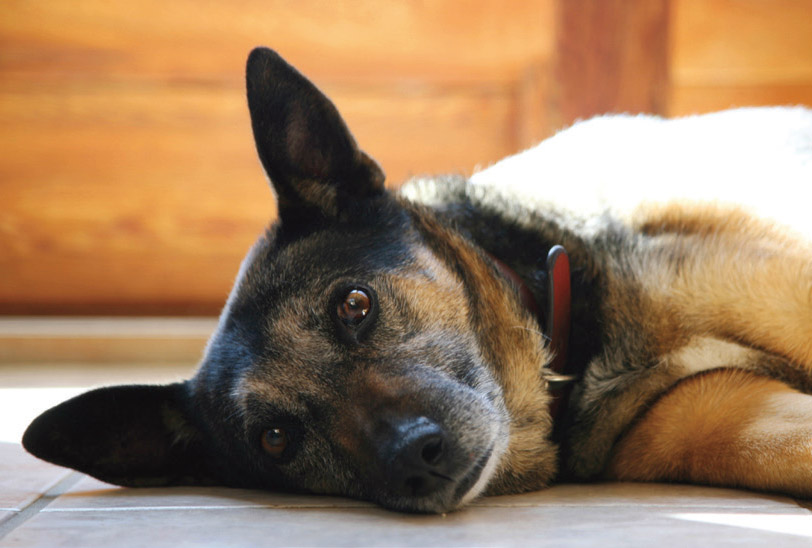The Australian summer can be brutal, with average temperatures reaching well over 36°C across a vast area of the interior. Farming in these conditions can be particularly tough – and unlike a lot of other people who work outside, you don’t get to down tools when the mercury hits 35°C.
But if you’re feeling the heat, spare a thought for your dogs. Working year-round come rain, hail or shine, their output is comparable to that of a marathon runner. That’s why it’s crucial in the hotter months to make sure that they get everything they need to stay in peak condition and don’t succumb to heat stress.
Australian working dogs like the kelpie, heeler, koolie and Smithfield lines were specifically bred for our climate, but high summer temperatures can put even these specialised breeds under stress. Dogs regulate their body temperature mostly by panting, and they only have sweat glands in their noses and paws. If their body temperature rises too far above their natural level (around 39°C), known as hyperthermia, they run the risk of a range of very serious consequences, including organ failure and even death. This is often described as ‘heat stroke’, ‘heat stress’ or ‘heat exhaustion’.
How do I know if my dogs are at risk of heat stroke?
There are a number of symptoms to look out for during hot weather, which will quickly tell you if it’s time to act:
- Rapid panting
- Excessively wet paw pads (from sweating)
- Reluctance to move or work
- Weakness/lethargy
- Excessive drooling
- Vomiting
- Dizziness or disorientation (your dog may appear wobbly or ‘drunk’).
What do I do if I think my dog has heat stroke?
Heat exhaustion requires immediate medical attention – call a veterinarian straight away. In the meantime:
- Wet your dog completely with cool (not iced) water
- Let them rest in a shady place with plenty of quality drinking water.
How can I look after my dogs in summer?
There are a number of simple things you can do to look after your working dogs in the hotter months:
Hydration: Give them access to plenty of cool, clean drinking water. In summer, dogs can require as much as 70 mL/kg of bodyweight per day.
Heat awareness: Try not to work your dogs during the hottest part of the day. Never leave them out in the sun or the car. Give them regular rest breaks during working hours, ideally with the opportunity for a swim. And if your dogs are long-haired, give them a good haircut during summer.
Nutrition: Make sure they’re eating properly after working. Often dogs lose their appetite when it gets hot, but they need a lot of nutrients to help promote recovery and energy replenishment. A feed which contains a palatant, like Cobber Working Dog , will help make meals more appetising and ensure they’re cleaning the bowl every time.
by David Nash & Dr Emma Bradbury


